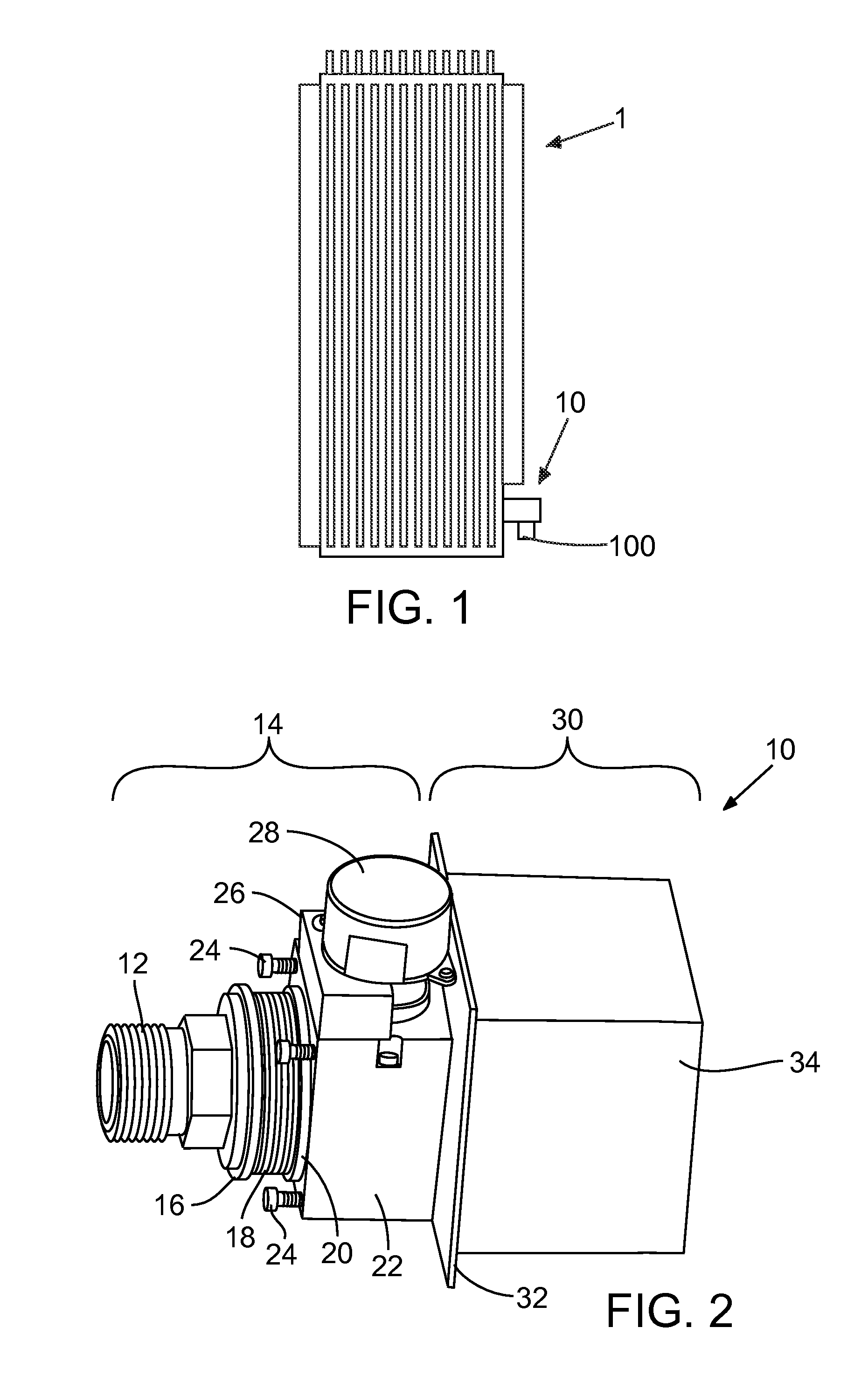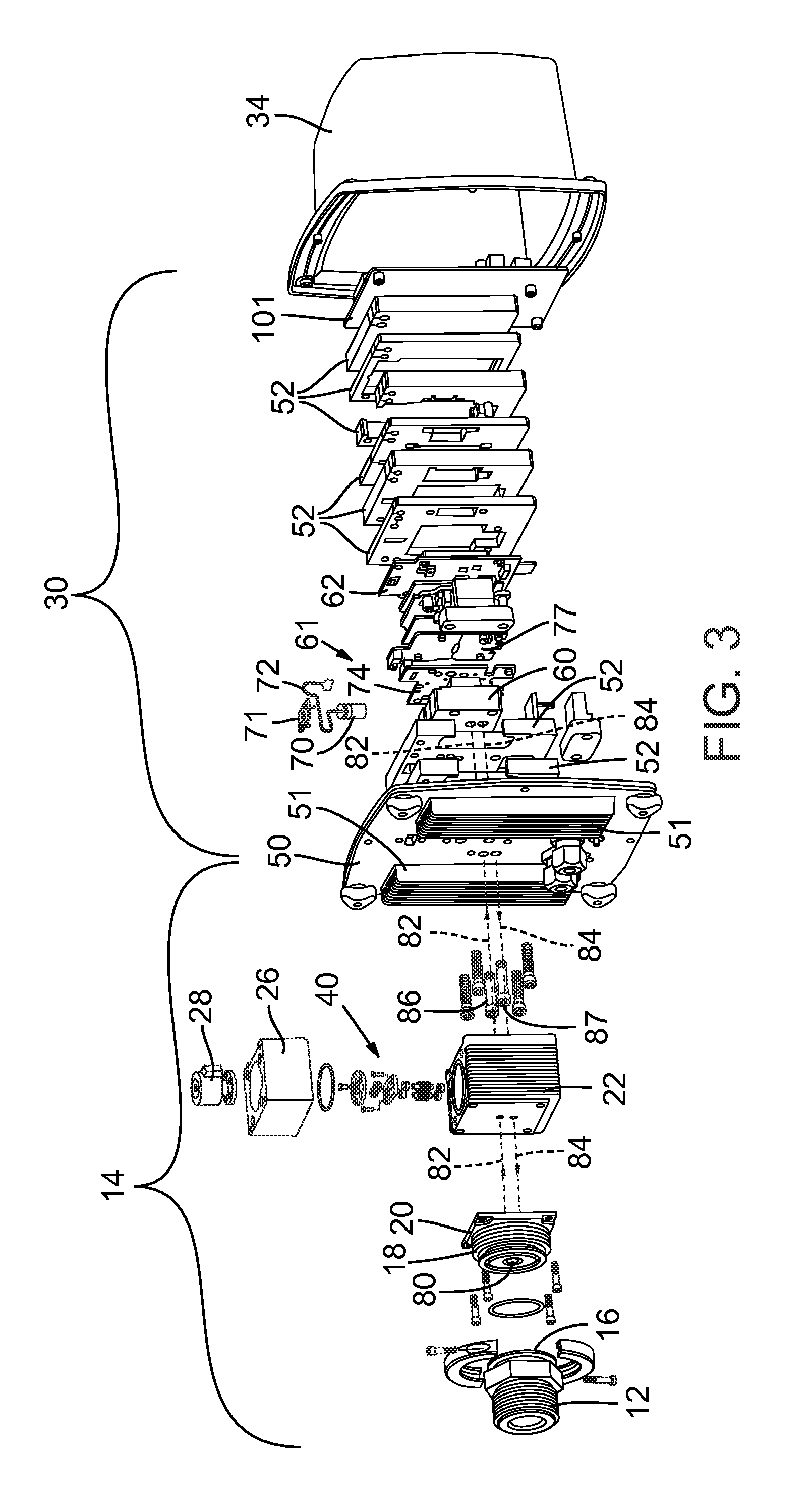Electrical Apparatus Oil Sampler and Conditioner for Solid State Sensors
a technology of electrical apparatus and oil sampler, which is applied in the field of apparatus and methods for sampling and conditioning electrical insulating oils, can solve the problems of high volatile compounds, large quantities, and decomposition of mineral transformer oils, and achieve reliable and accurate monitoring, eliminate data irregularities, and improve response time
- Summary
- Abstract
- Description
- Claims
- Application Information
AI Technical Summary
Benefits of technology
Problems solved by technology
Method used
Image
Examples
Embodiment Construction
[0025]With reference to FIG. 1, apparatus and system 10 is illustrated schematically attached to an oil-drain port of an oil-filled electrical device (referred to at times as an “asset”), identified with reference number 1. It will be appreciated that the invention described herein may be used with many different types of electrical devices, and also that the device may be attached to many different locations on the devices. The figures included herein are thus intended to be exemplary but not limiting.
[0026]As detailed below, the system and apparatus 10 is comprised of a gas sensing element with associated electronics and cabling, a fluid delivery system to provide fresh samples to the gas sensing element, a thermal control system for the sample fluid, a second thermal control system for the gas sensing element electronics environment, and additional electronics for data logging, communications, power conditioning and alarming.
[0027]The apparatus 10 is intended for use on oil fille...
PUM
| Property | Measurement | Unit |
|---|---|---|
| thermal | aaaaa | aaaaa |
| temperature | aaaaa | aaaaa |
| molecular weight | aaaaa | aaaaa |
Abstract
Description
Claims
Application Information
 Login to View More
Login to View More - R&D
- Intellectual Property
- Life Sciences
- Materials
- Tech Scout
- Unparalleled Data Quality
- Higher Quality Content
- 60% Fewer Hallucinations
Browse by: Latest US Patents, China's latest patents, Technical Efficacy Thesaurus, Application Domain, Technology Topic, Popular Technical Reports.
© 2025 PatSnap. All rights reserved.Legal|Privacy policy|Modern Slavery Act Transparency Statement|Sitemap|About US| Contact US: help@patsnap.com



